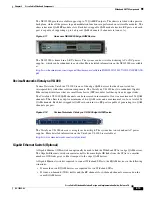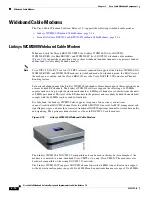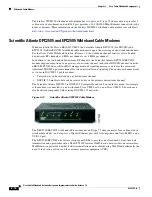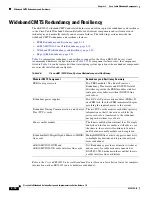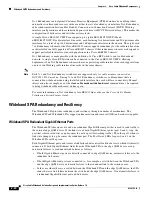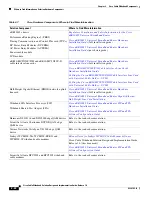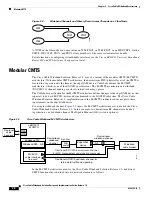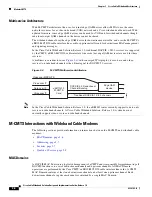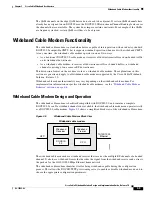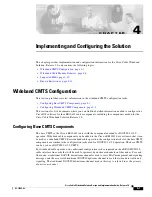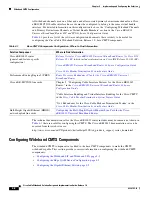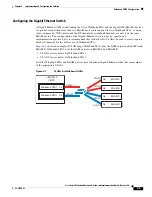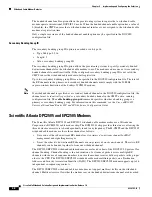
3-5
Cisco Cable Wideband Solution Design and Implementation Guide, Release 1.0
OL-10705-02
Chapter 3 Cisco Cable Wideband Architecture
Modular CMTS
•
M-CMTS Core
—Contains the traditional functionality of a CMTS except for the downstream PHY.
The M-CMTS Core provides CMTS functionality, such as DOCSIS MAC (media access control)
and upstream QPSK and QAM demodulation. DOCSIS MAC includes upstream and downstream
packet transmission services and MAC management message exchanges with cable modems. In the
Cisco Cable Wideband Solution, the Cisco uBR10012 router is the M-CMTS Core device.
•
Edge QAM (EQAM) Device
—Connects to the M-CMTS Core and contains PHY-related hardware,
such as QAM modulators. For input, the EQAM device communicates with the M-CMTS through
redundant Gigabit Ethernet interfaces. For output, the EQAM device has multiple QAM modulators
and RF upconverters that connect to a hybrid fiber coaxial (HFC) network. In the Cisco Cable
Wideband Solution, four EQAM devices are tested for interoperability with solution components:
–
Scientific Atlanta Continuum DVP eXtra Dense QAM Array 24 (XDQA24)
–
Harmonic Narrowcast Services Gateway (NSG) 9116
–
Harmonic Narrowcast Services Gateway (NSG) 9000
–
Vecima Networks VistaLynx VL1000
Benefits of M-CMTS Architecture
Some of the benefits of a modular CMTS architecture are described in these sections:
•
Cost Effective Architecture, page 3-5
•
Multiservice Architecture, page 3-6
Cost Effective Architecture
The Cisco Cable Wideband Solution, Release 1.0, can use the MSO’s existing network. Deployed
uBR10012 routers that are used as a DOCSIS 1.x/2.0 CMTS’s can be upgraded to a modular CMTS’s
that support wideband cable by adding on hardware (the Cisco Wideband SIP and SPA) and upgrading
software. Some existing external QAM array devices used for video on demand (VOD), with a software
upgrade, may be able to be employed as the edge QAM device. For edge QAM devices that have been
tested for interoperability, see the
“External Edge QAM Device” section on page 2-11
.
MSOs can repurpose their existing network infrastructure, including existing fiber nodes, for wideband
cable. The benefits of the M-CMTS architecture include:
•
Takes advantage of the lower cost, lower power requirements, and higher density of edge QAM
devices.
•
Uses less-expensive external QAM arrays for downstream wideband channels. This is more cost
effective than locating the downstream QAMs in the CMTS chassis.
•
Saves operating costs by avoiding rewiring and moving customers to new systems.
With traditional CMTS architecture, adding downstream RF channels for a wideband channel would
mean also adding multiple upstreams. With the M-CMTS architecture, multiple downstream
RF channels can be aggregated into a wideband channel without adding any additional upstreams. This
independent scaling of downstream channels makes wideband channels economically feasible.

